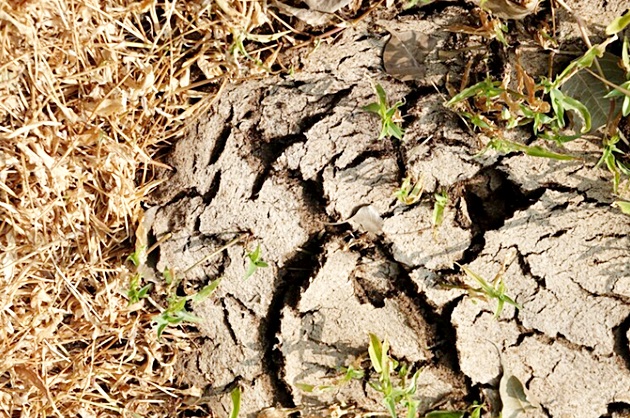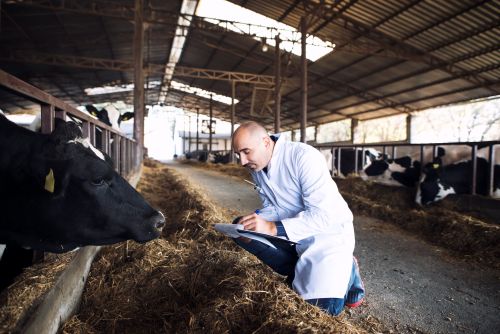610

The forecasted drought in Black Sea region countries is likely to weaken sunflower and corn crops, while heavy rains in the U.S., following near-record temperatures, threaten to affect crops, tightening global supplies and pushing prices higher, reports Euractiv.
A big red flag!
“The weather forecast for the Black Sea region is a big red flag,” said Chris Hyde, a meteorologist at U.S.-based Maxar, with dryness and below-normal rains expected for July and August, which could impact key corn and sunflower crops in the region.
Record temperatures in major global growing regions have delayed planting and affected developing crops as the impact of climate change intensifies, with vast areas of farmland in Russia, China, India, and parts of the United States facing extremely hot conditions and below-normal rainfall.
Global wheat prices rose to their highest level in the last 10 months in May, after unfavorable weather reduced yields of the maturing crop in Russia, the largest exporter.
Hot weather in southern Russia will affect crops due to the lack of soil moisture, with lower rains and cooler temperatures expected in the Urals, Western Siberia, and Transbaikalia, Russia’s Hydrometeorological Center said in a forecast.
Southern and eastern Ukraine have also experienced hot and dry weather, with rainfall between May 1 and June 10 only 20-50% of normal, according to state meteorologists, with drought hindering the development of winter and spring crops in parts of the Kharkiv and Donetsk regions.
“May in Ukraine turned out to be one of the driest in the last 30 years,” state meteorologists said. “In the northern regions, especially in Zhytomyr, hail has damaged spring crops, such as corn, soybeans, and sunflowers.”
Severe drought in the USA
In the U.S., a top food exporter, intense heat has gripped parts of the East Coast, prompting the government to reduce the percentage of corn and soybeans rated good and excellent on Monday. Excessive rains in the key growing Midwest region and forecasts for wetter weather have raised fears of flooding.
“In the Midwest, the focus shifts from heat to too much rain, which could lead to flooding in corn and soybean-growing areas, especially in the Upper Midwest,” said Hyde.
Iowa Governor Kim Reynolds said on the social media platform X that widespread flooding in northwest Iowa, the largest corn-producing state in the U.S., had pushed river levels above records set in 1993.
BNSF Railway, owned by Berkshire Hathaway, said in a statement that a bridge collapsed over the Big Sioux River on Sunday and that it is rerouting trains through Creston, Iowa. Union Pacific said it closed rail lines between Mason City, Iowa, and St. Paul, Minnesota, and between Sioux City, Iowa, and St. Paul.
Rob Jacobs, executive director of Cooperative Farmers Elevator, said severe flooding had affected several of the cooperative’s locations, with roads washed out and feed mill facilities flooded. Tunnels used to load grain bins were flooded, and warehouses used to store seeds and agricultural chemicals were filled with up to 18 inches (46 cm) of water, Jacobs said.
Most analysts said it was too early to estimate the potential crop damage caused by flooding.
Weather has improved in China and India
In Asia, ample rains are expected to alleviate severe dryness in parts of China, a top soybean buyer, while monsoon rains in India, a fifth below normal, could recover, boosting agriculture in the world’s largest rice exporter and top edible oil importer.
“Corn and soybean production in China in the north and east has been dry and a concern,” Hyde said. “But the weather is expected to be normal to slightly above-normal precipitation in the July-September period, which will be beneficial for crops.”
China’s meteorological center told Reuters that parts of northern, northeastern, and western provinces would see higher rainfall in July through September, encouraging crop growth.
“But rainfall will be intense in some areas, and there must be vigilance about rapid changes from drought to floods,” it said, adding that higher humidity could also increase the risk of crop diseases and pests.
In India, the monsoon is advancing after stalling for more than a week, a weather department official said.
“It has now gained much-needed momentum for advancing into the northern plains. Over the next few weeks, we expect some heavy rain spells that will erase the rainfall deficit. July is shaping up to be promising.”
Weather in Australia is expected to be normal, with some areas seeing above-average rainfall, boosting the wheat crop outlook, while mostly normal weather is forecast in the coming months for Argentina and Brazil. (Photo: Freepik)




